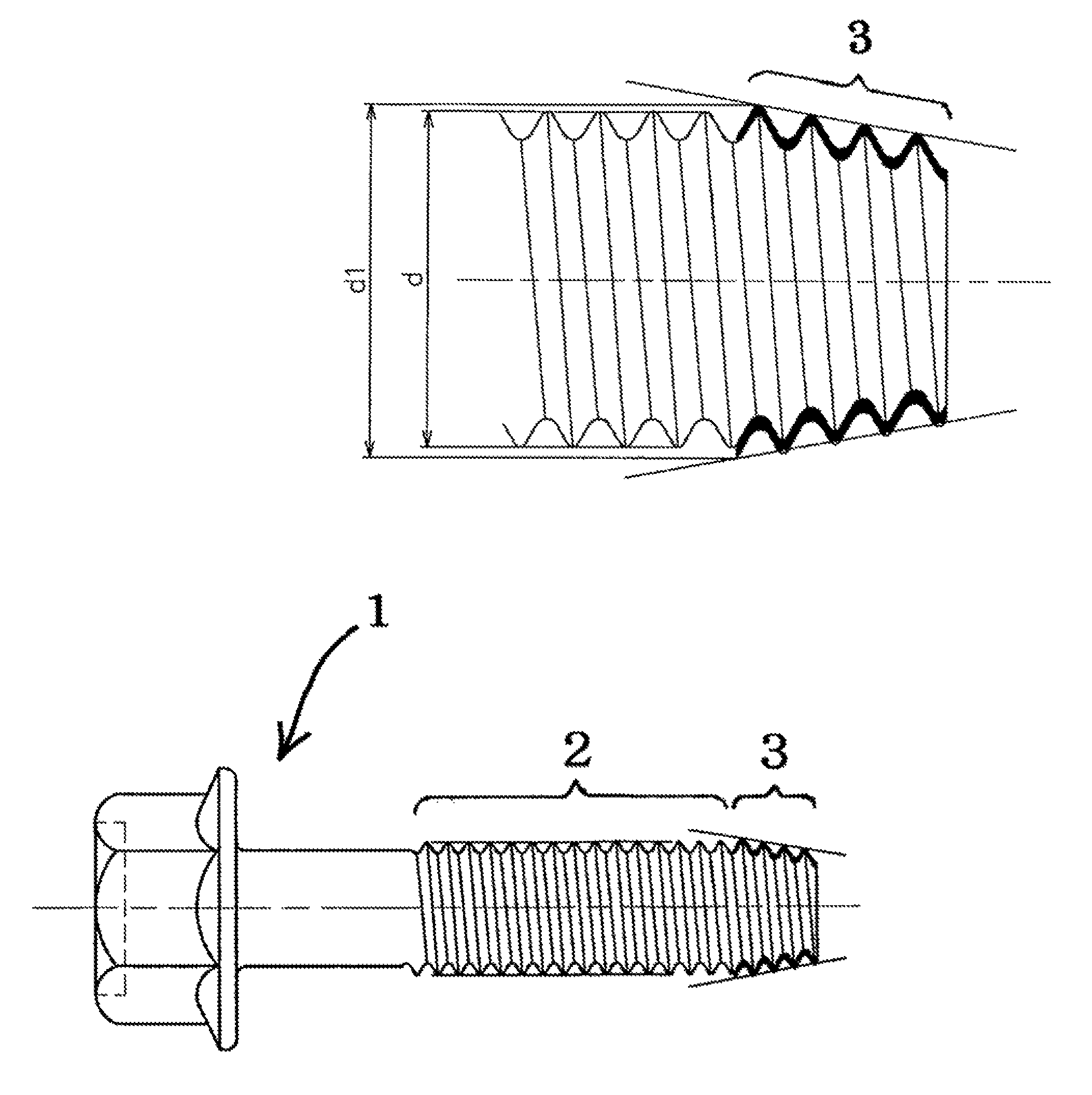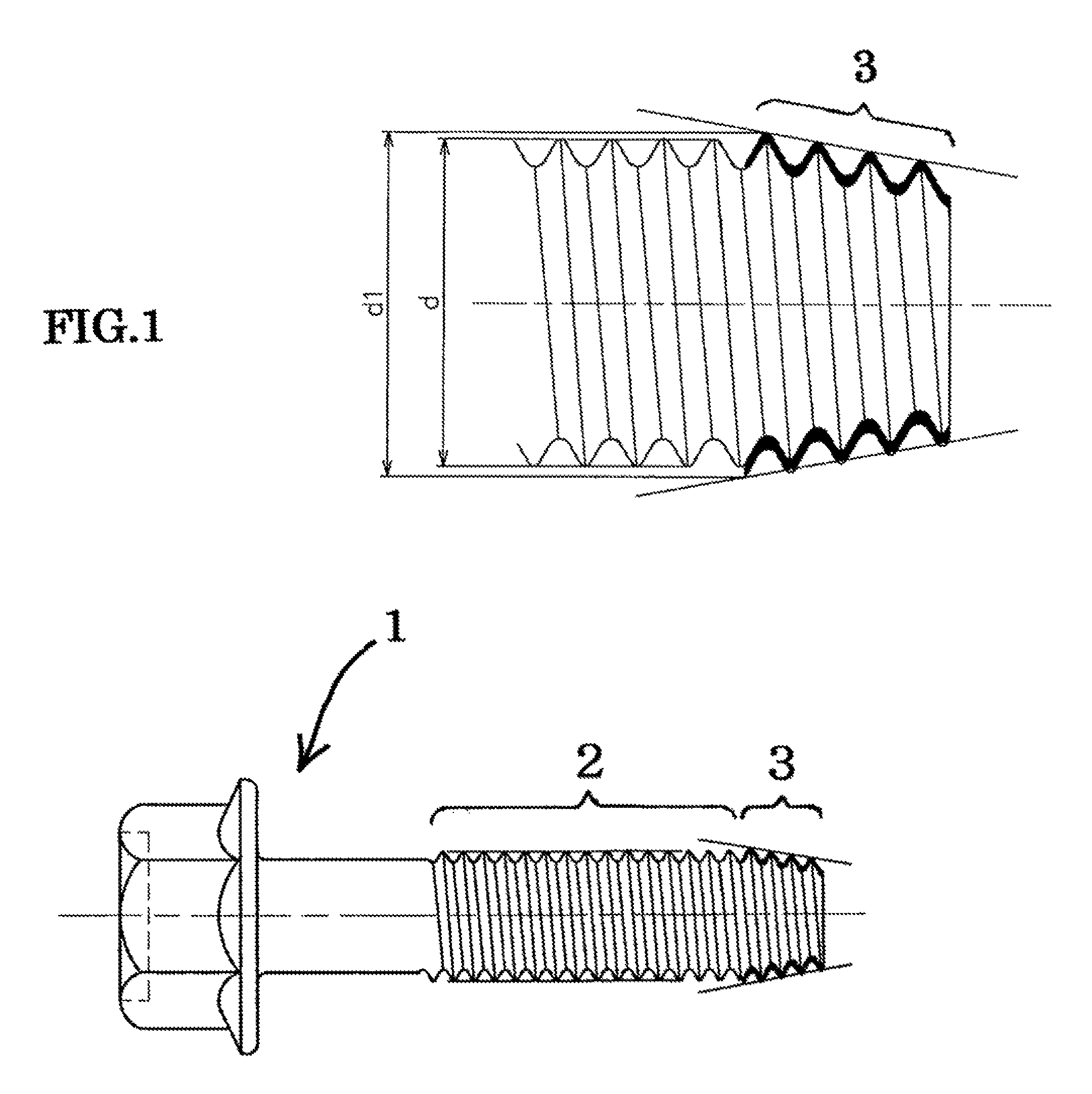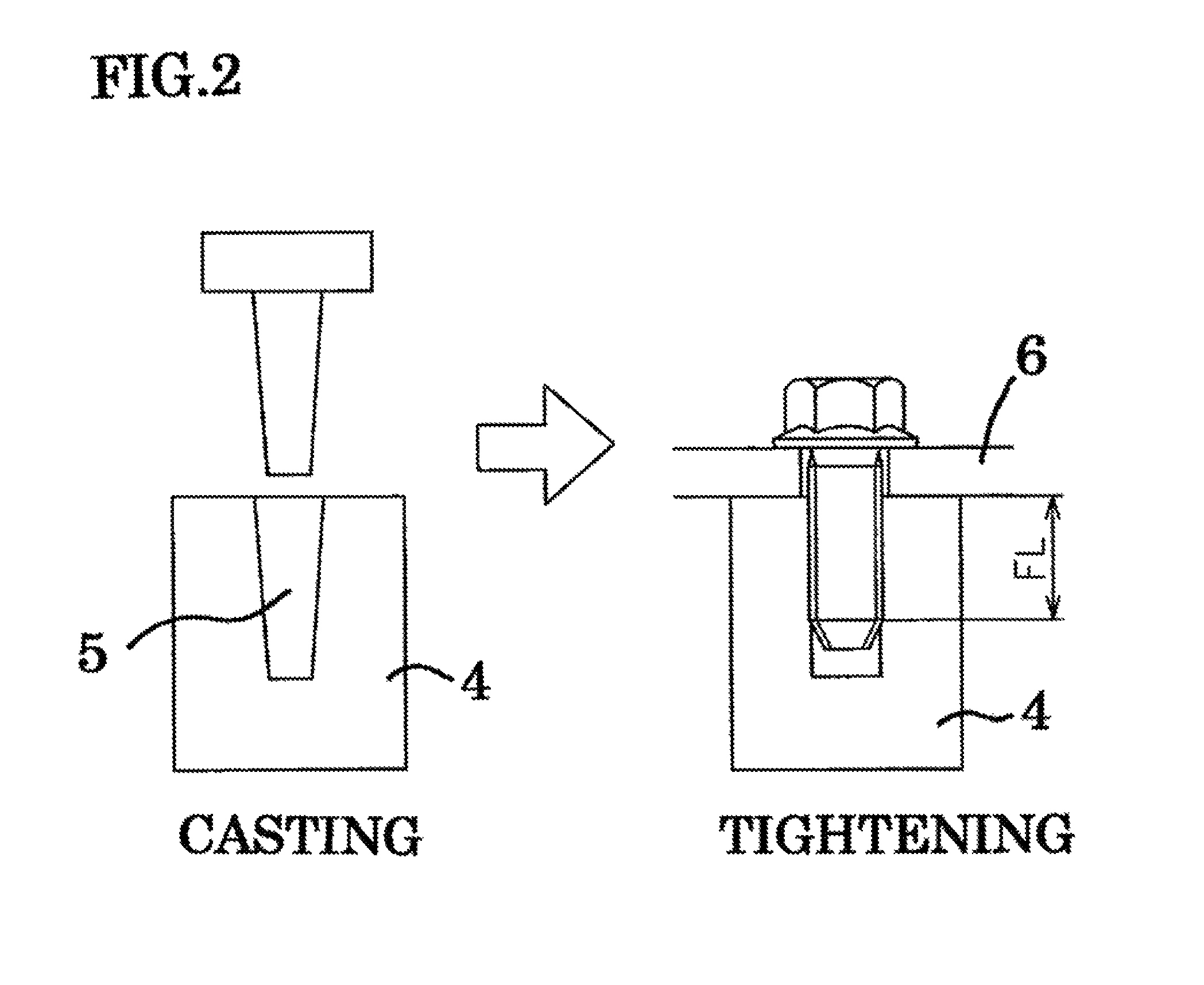Tightening structure using high-strength self-forming screws
a self-forming screw and tightening technology, applied in the direction of fastening means, screws, couplings, etc., can solve the problems of fatigue fracture, unavoidable size reduction in comparison with conventional bolts, fuel efficiency, environmental friendliness, etc., to improve the strength of the bolt and the fatigue strength of the tightening thread ridge, the effect of strengthening the tightening
- Summary
- Abstract
- Description
- Claims
- Application Information
AI Technical Summary
Benefits of technology
Problems solved by technology
Method used
Image
Examples
Embodiment Construction
[0019]Preferred embodiments of the present invention will become evident from the following description with reference to the attached drawings.
[0020]F1G. 1 shows a self-forming screw 1 used in the present invention. The self-forming screw 1 is a steel screw manufactured by pre-heat treatment rolling and having a strength of 14T (minimum tensile strength 1400 N / mm2, hardness 44 to 47 HRC). A thread portion thereof is constituted by a tapered self-forming thread portion 3 and a parallel thread portion 2 for performing normal tightening. The self-forming thread portion 3 is formed over a range of 1 to 5 pitches, and a maximum outer diameter or hypothetical outer diameter thereof d1 is between 1 and 10% larger than the outer diameter d of an external screw of the parallel thread portion 2. The hypothetical outer diameter denotes the diameter of a column formed hypothetically by the tip ends of projections when projections are provided on the thread portion of the self-forming thread po...
PUM
 Login to View More
Login to View More Abstract
Description
Claims
Application Information
 Login to View More
Login to View More - R&D
- Intellectual Property
- Life Sciences
- Materials
- Tech Scout
- Unparalleled Data Quality
- Higher Quality Content
- 60% Fewer Hallucinations
Browse by: Latest US Patents, China's latest patents, Technical Efficacy Thesaurus, Application Domain, Technology Topic, Popular Technical Reports.
© 2025 PatSnap. All rights reserved.Legal|Privacy policy|Modern Slavery Act Transparency Statement|Sitemap|About US| Contact US: help@patsnap.com



